- Home
- Sightseeing Spots
Sightseeing Spots
141 - 160 / 214 RESULTS
-

Southern Area
Kasadera Kannon
A Shingon Sect temple. Also known as Tenrinzan Ryufukuji Temple. In 733, during the reign of Emperor Shomu, a Buddhist priest named Zenko Shonin found a piece of driftwood on Yobitsugi beach and carved it into an 11-faced Kannon statue. The statue was enshrined at this temple, which was called Komatsudera Temple at the time. On the temple site are Harusamezuka and Kasadera-Chidorizuka, which are sites connected with Basho, and a monument to Miyamoto Musashi. See More
A Shingon Sect temple. Also known as Tenrinzan Ryufukuji Temple. In 733, during the reign of Emperor Shomu, a Buddhist priest nam…See More
-

Southern Area
Oka Family Residence (Arimatsu)
A designated cultural property of Nagoya. Important townscape building. Built in late Edo period, Okatei is a building in which substantial architectural style is well preserved and it is the biggest residence in Arimatsu. The residence consists of a main house, a workplace and two warehouses. Its well-preserved architectural styles include renjikoshi, a kind of lattice window; namakokabe, a wall with square tiles jointed with raised plaster; mushikomado, a type of window containing an insect cage-like lattice; and nurigome-zukuri, a process used to build a fire-resistant wall. The wave-shaped fire-resistant plaster wall under eaves is a prominent feature of the house. See More
A designated cultural property of Nagoya. Important townscape building. Built in late Edo period, Okatei is a building in which s…See More
-

Southern Area
Miya no Watashi Park
Miya no Watashi Park is a historic park built from a wharf of Miya-juku, one of the 53 post stations of the Tokaido. The route from Miya-juku to Kuwana-juku was the only sea route in the whole Tokaido. The sea route was called Shichiri no Watashi based on the distance of the route. See More
Miya no Watashi Park is a historic park built from a wharf of Miya-juku, one of the 53 post stations of the Tokaido. The route fr…See More
-

Southern Area
Atsuta Shrine Museum
About 4,000 historic items donated from the worshippers of Atsuta Jingu are maintained and exhibited. A total of 176 items are designated as national treasures, important cultural property, or Aichi prefectural cultural property. See More
About 4,000 historic items donated from the worshippers of Atsuta Jingu are maintained and exhibited. A total of 176 items are de…See More
-

Southern Area
Hattori Family Residence (Arimatsu)
Registered Important Cultural Property of Aichi Prefecture. This is a mansion established in the late Edo era and consisting of one main building, one guest house, a gate, mon-nagaya (houses in a row with the gate), and six storehouses in the large site. Fire protection technology of those days is well preserved with the following architectural styles: renjikoshi, a kind of lattice window; namakokabe, a wall with square tiles jointed with raised plaster; mushikomado, a type of window containing a lattice like an insect cage; nurigome-zukuri, a process used to build a fire-resident wall; and udatsu, a short pillar set on a beam to support a ridgepole. House of Hattori is a representative building of Arimatsu. See More
Registered Important Cultural Property of Aichi Prefecture. This is a mansion established in the late Edo era and consisting of o…See More
-

Southern Area
Kozuka Family Residence (Arimatsu)
A designated cultural property of Nagoya. Important townscape building. The House of Kozuka was built after the great fire of Tenmei occurred in Nagoya in 1784. The house consists of one main house, two storehouses, and one tea ceremony room. The following architectural styles are remarkably well preserved: renjikoshi, a kind of lattice window; namakokabe, a wall with square tiles jointed with raised plaster; mushikomado, a type of window containing lattice like an insect cage; nurigome-zukuri, a process used to build a fire-resistant wall; and udatsu, a short pillar set on a beam to support a ridgepole. A ring to tie horses that remains on the outer pillar recalls to mind the old days. See More
A designated cultural property of Nagoya. Important townscape building. The House of Kozuka was built after the great fire of Ten…See More
-

Southern Area
Takeda Family Residence (Arimatsu)
One of Nagoya City's designated cultural properties and buildings of scenic importance A well-preserved tie-dyeing merchant's townhouse-style residence, and one of the landmark buildings of Arimatsu on the Tokaido Road. The residence consists of the main house, three storehouses, one tea room, and a 26-mat shoin-zukuri tatami drawing room. The walls on the second floor are painted with black plaster to make them fire-resistant, and Meiji period lamps remain on the eaves. These meticulously preserved details offer a glimpse of a prosperous merchant house of that time. See More
One of Nagoya City's designated cultural properties and buildings of scenic importance A well-preserved tie-dyeing merchant's to…See More
-

Southern Area
Historic Townscapes of Arimatsu
The village was established in 1608 between the post towns of Chiryu and Narumi on the Old Tokaido Road, through encouragement by the ruling clan. The traditional Arimatsu-shibori tie-dyeing of this area is said to have been invented by the first immigrant to the village, Takeda Shokuro, and the village prospered along with the tie-dyeing industry. Arimatsu lies along about 800 gently bending meters of the Tokaido Road. The townscape's relatively relaxed atmosphere has been preserved, with many wide-plot tie-dyeing stores, gates, and fences. See More
The village was established in 1608 between the post towns of Chiryu and Narumi on the Old Tokaido Road, through encouragement by…See More
-

Port
LEGOLAND® JAPAN RESORT
Opened in April 2017, LEGOLAND® Japan is an outdoor theme park for kids ages two to twelve to enjoy a whole day with their families. In this park with around 17 million LEGO® blocks and 10,000 LEGO® models, there are lots of adventure-type interactive attractions based around the LEGO® world. LEGO® NINJAGO World, one of the most popular areas among all the LEGOLAND® parks around the world, opened in July 2019. The park has over 40 rides, attractions, and shows in eight different areas, and many of the rides can be enjoyed by small children. It's a place where families can have a truly wonderful day out together. The park is also home to SEA LIFE Nagoya, an aquarium where you can see, touch, and learn about the many surprises of the ocean world, and LEGOLAND® Japan Hotel, where you can stay in a LEGO® block world until morning. Spend an exciting day at LEGOLAND® Japan Resort, where child… See More
Opened in April 2017, LEGOLAND® Japan is an outdoor theme park for kids ages two to twelve to enjoy a whole day with their famili…See More
-
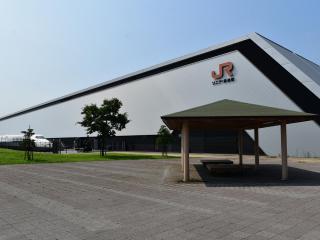
Port
SCMAGLEV and Railway Park
SCMAGLEV and Railway Park is a museum filled with dreams and memories of each generation. Opened March 14, 2011, this establishment introduces the evolution of high-speed railway technology through train car exhibits from local trains to the Superconducting Maglev train with a focus on the Tokaido Line bullet trains. You can learn about the workings of railroads and the progress of their histories through things like detailed railroad dioramas and bullet train driving simulators. See More
SCMAGLEV and Railway Park is a museum filled with dreams and memories of each generation. Opened March 14, 2011, this establis…See More
-
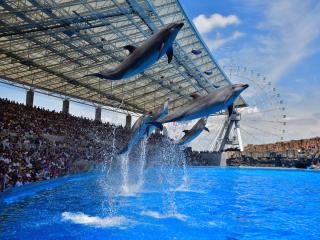
Port
Port of Nagoya Public Aquarium
This amazing aquarium's got it all! The South Building is centered around the theme of A Tour Through Antarctica, introducing the creatures and habitats of five areas along Antarctic icebreaker Fuji's expedition to the Antarctic from Japan. In the North Building, the theme is 3.5 Billion Years Back in Time: Creatures who Came Back to the Sea. Encounter bottlenose dolphins, belugas whales, and other animals who actually once lived on land! The nearby Main Pool—the largest in Japan—offers performances for extra insight into the lives and behaviors of our sea friend from stands seating approximately 3,000 people. See More
This amazing aquarium's got it all! The South Building is centered around the theme of A Tour Through Antarctica, introducing the…See More
-

Port
Japan Spinning Top Museum
A long time ago, an indispensable children's game was the spinning top. Not only in Japan but from all over the world, 20,000 spinning tops are collected here. The toys sold at dagasiya (old-fashioned penny candy stores) and traditional toys of the world are also exhibited. In addition, visitors can learn how to play with the spinning tops. See More
A long time ago, an indispensable children's game was the spinning top. Not only in Japan but from all over the world, 20,000 spi…See More
-
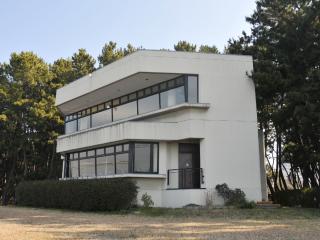
Port
Birding Hots Spot Fujimae Tideland
Nagoya City Wild Bird Watching Building: Where you can see migrating birds on the Fujimae Tidal Flat Throughout the year, more than 100 species of wild birds land at the Fujimae Tidal Flat. It is the foremost landing spot for migratory birds in the country, and is a designated Ramsar Site. The Nagoya City Wild Bird Watching Building is a place where you can watch them. You can see sandpipers and plovers in the migrating seasons in the spring and fall, and thousands of ducks and dunlins in winter. Recently, there has been an increase in sightings of ospreys (a relative of the hawk). If you're lucky, you'll get to see an osprey catch and eat a fish. See More
Nagoya City Wild Bird Watching Building: Where you can see migrating birds on the Fujimae Tidal Flat Throughout the year, more…See More
-
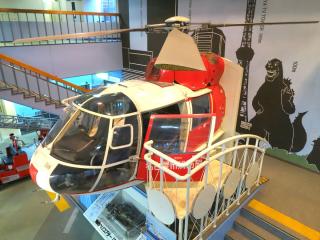
Port
Nagoya City Port Disaster Prevention Center
The Nagoya City Port Disaster Prevention Center is a facility where visitors can learn about disasters and disaster preparedness through various exhibits, workshops, and virtual experiences. Visitors can experience simulated earthquakes, typhoons, tsunamis, and smoke evacuation scenarios using 3D technology. The center aims to raise awareness about the realities of disasters and teach effective ways to respond and cope with emergencies. See More
The Nagoya City Port Disaster Prevention Center is a facility where visitors can learn about disasters and disaster preparedness …See More
-
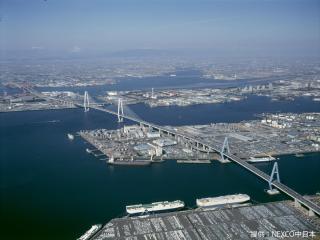
Port
Nagoya Port Toriton
The nickname for the three cable-stayed bridges (Meiko Higashi-ohashi Bridge, Meiko Chuo-ohashi Bridge, and Meiko Nishi-ohashi Bridge) between the Tokai IC and Tobishima IC on the Isewangan Expressway. Among the world's largest cable-stayed ocean bridges, they are often one of the points people want to see on sightseeing boat courses. The main towers on each bridge are colored blue, white, and red respectively. They were completed on March 30, 1998, after eight years of construction. See More
The nickname for the three cable-stayed bridges (Meiko Higashi-ohashi Bridge, Meiko Chuo-ohashi Bridge, and Meiko Nishi-ohashi Br…See More
-
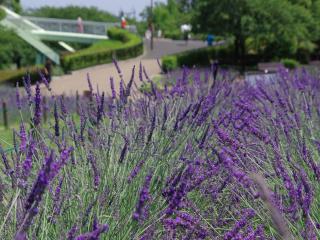
Port
Arakogawa Park
This is a park where you can enjoy beautiful scenery throughout the year. It is located near the mouth of the Arako River and stretches along both sides of the river. The park is filled with various green demonstration gardens and open spaces, making it a lush and green place to visit. One of the highlights is the "Lavender Garden" in Arako River Park. Here, you can see purple flowers swaying in the wind and experience a subtle and pleasant fragrance. They hold a special event called the "Lavender Fair" during the blooming season. Throughout the year, the park offers other attractions too. In spring, cherry blossoms bloom in all their glory, and in autumn, various trees display their vibrant fall colors. It's a wonderful place to enjoy the changing scenery with the passing of each season. See More
This is a park where you can enjoy beautiful scenery throughout the year. It is located near the mouth of the Arako River and str…See More
-
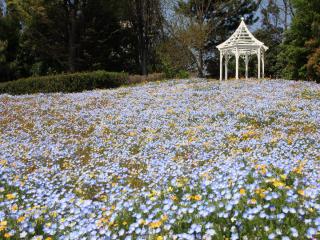
Port
Nagoya Port Wildflower Garden - Bluebonnet
Wildflower refers to those flowering plants that create an ambience of a natural wildness. Enjoy the simple richness that these wildflowers have and get some ideas for your own garden from the variety of styles that are shown here. See More
Wildflower refers to those flowering plants that create an ambience of a natural wildness. Enjoy the simple richness that these w…See More
-
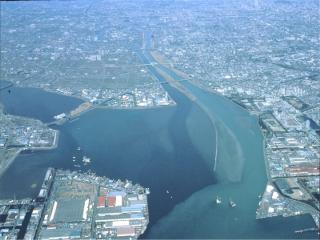
Port
Fujimae Higata
Preserving Precious Nature in a Big City The Fujimae Tidal Flat, located in the innermost part of Nagoya Port at the mouth of the Shonai, Shinkawa, and Nikko Rivers, stands as one of Japan's leading destinations for approximately 40 species of sandpipers and plovers. At one point, it faced the threat of being turned into a landfill site, however, this plan was ultimately canceled. In 2002, the site was registered as a wetland under the Ramsar Convention, earning recognition as an internationally important tidal flat. See More
Preserving Precious Nature in a Big City The Fujimae Tidal Flat, located in the innermost part of Nagoya Port at the mouth of th…See More
-

Port
Agricultural Park
Let's go! A One-Day Trip of Farming and Greenery The Toda River Greenery, spanning approximately 2.5 kilometers along both sides of the Toda River, is a vast park developed with the themes of an agricultural park which opened in the first year of Heisei (1989) to nurture the importance of agriculture and love for flowers among citizens, and health and sports village. Situated in the southwestern part of Nagoya, it is the largest park in that area. See More
Let's go! A One-Day Trip of Farming and Greenery The Toda River Greenery, spanning approximately 2.5 kilometers along both sides…See More
-

Port
Todagawa Children's Land
Let's have fun and move our bodies in nature! "Todagawa Kodomo Land" is the only "large-scale children's center" in Nagoya with a vast area of approximately 1.7 hectares. It's a popular spot for families located within the rare natural environment of the Toda River Greenery. Outdoors, there are large wooden play structures such as Tarzan ropes and net crossings (barrier-free accessible), play equipment for toddlers, a water play area, and an observation tower. Inside the main building, daily workshops using everyday materials are held. On weekends, there are parent-child cooking classes (reservation required) and various events like theater performances and concerts. Moreover, they offer plans that cater to parents as well, including workshops on infant and toddler nutrition, parenting salons, and consultations for children provided by specialized counselors in child welfare and psy… See More
Let's have fun and move our bodies in nature! "Todagawa Kodomo Land" is the only "large-scale children's center" in Nagoya with …See More















